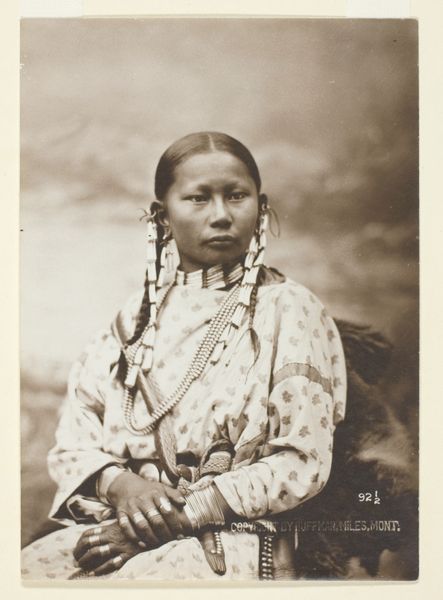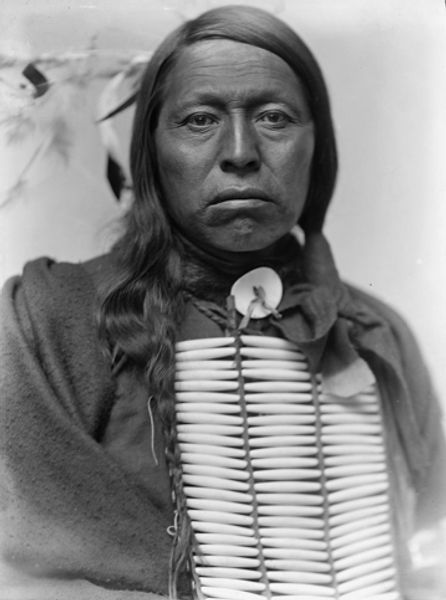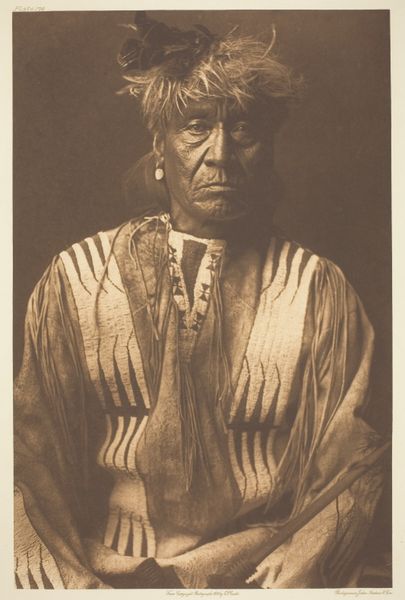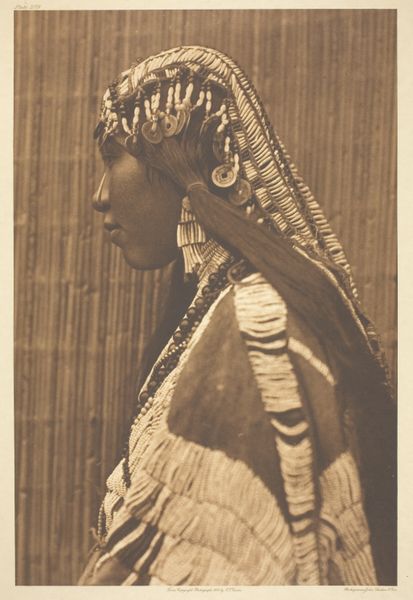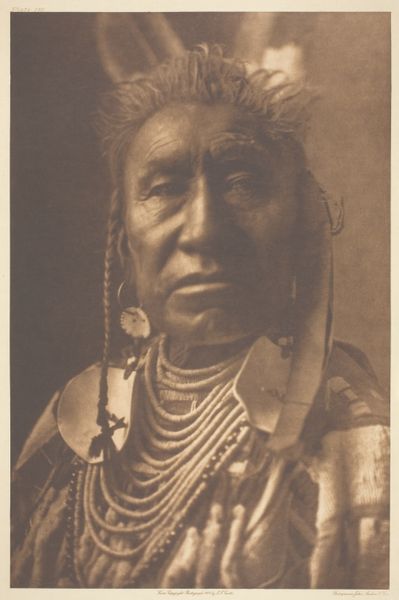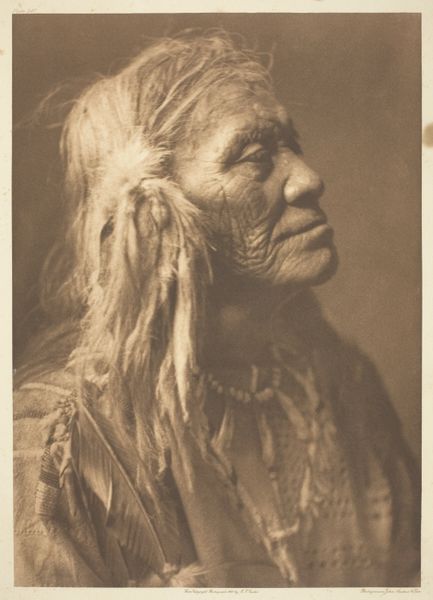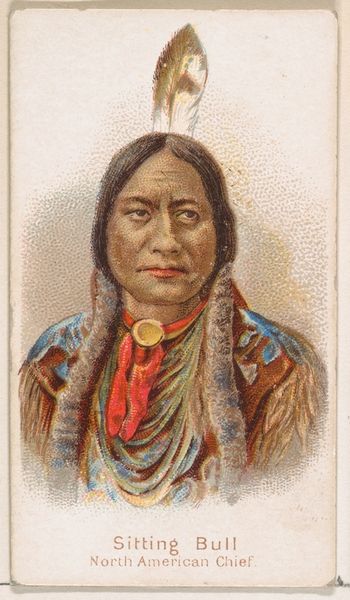
photography, gelatin-silver-print
#
portrait
#
portrait
#
photography
#
black and white
#
gelatin-silver-print
#
monochrome photography
#
monochrome
#
monochrome
Copyright: Public domain
Curator: Gertrude Käsebier’s gelatin silver print, taken around 1900, presents a profile portrait of "Wife of American Horse, Dakota Sioux." The monochrome tones and soft focus evoke a sense of quiet dignity. Editor: It has such an intimate feel, despite the clear formality of a studio portrait. There’s a sadness in her gaze, or maybe it's just a somberness, but it draws me right in. What do you make of the circumstances surrounding the photo's making? Curator: The historical context is key. Käsebier, although known for sentimental portraits of mothers and children, actively sought to photograph Native Americans visiting the East Coast as part of Buffalo Bill’s Wild West Show. There was definitely an exchange happening—photographic access for performance opportunities. Editor: Right. It becomes a transaction. We see this woman, but how much do we *see*? Look at the details of her clothing, her jewelry. Are these items personal to her, reflecting her own artistic and material culture? Or were they curated or requested by Käsebier for visual effect and marketability? The layers of material involved are important: the photographic chemicals, the jewelry and her dress... All are made to construct meaning. Curator: That’s the tension isn't it? Käsebier saw herself as an artist, manipulating light and shadow with pictorialist techniques, but her subjects came with histories, social and political pressures— she worked within this framework whether conscious of it or not. She, in a way, profited by showing it through exhibitions and publications to an eager public. Editor: And it speaks to the institutional apparatus as well: how did these images circulate? What audiences consumed them, and with what preconceived notions about Native Americans? Museums, galleries, photographic societies—all played a role in shaping the narrative. What looks like an honest rendering is definitely loaded. Curator: Absolutely. I'm also interested in how photography became another tool used to categorize and document indigenous people at the turn of the century. The work exists within that frame. Editor: Yes, the intersection of art, ethnography, and even entertainment created a complicated picture—or portrait, in this case. I still find that feeling of intimacy though, however problematic it may be. It provokes conversation around larger structural questions within artistic productions. Curator: Precisely, this image offers us a poignant access point to broader, historical considerations. Editor: Well, on that note, I guess we can offer visitors an extended lens with which to regard this work, encouraging further discussion.
Comments
No comments
Be the first to comment and join the conversation on the ultimate creative platform.
